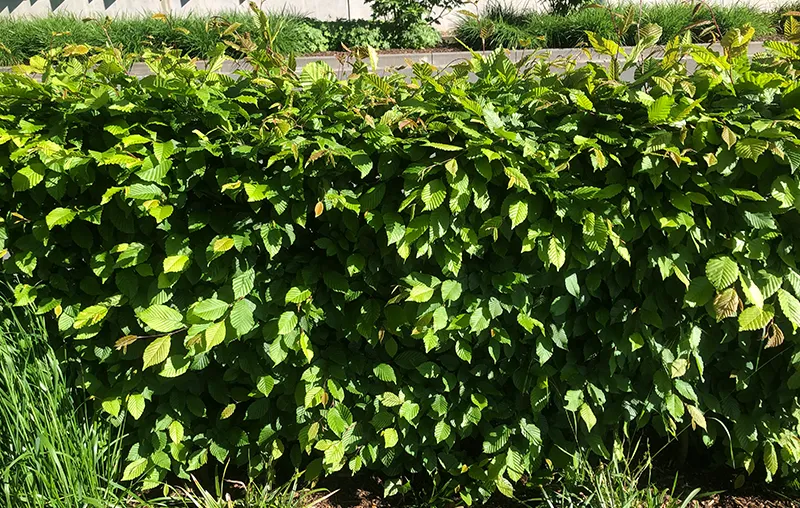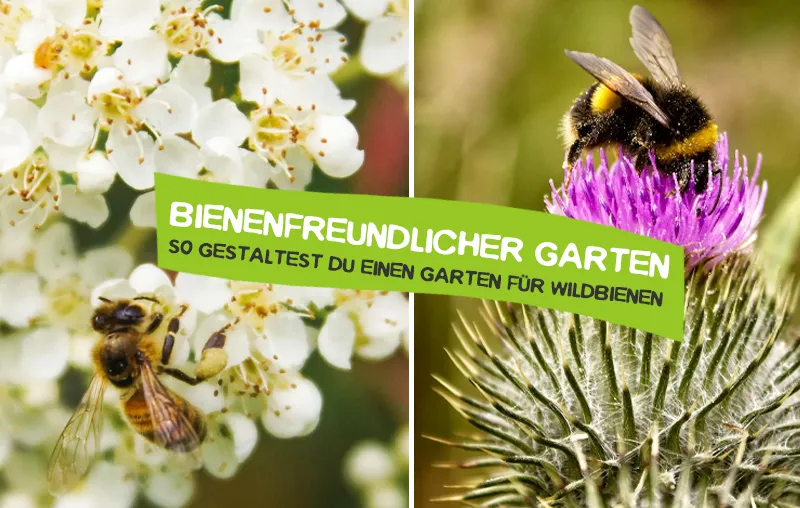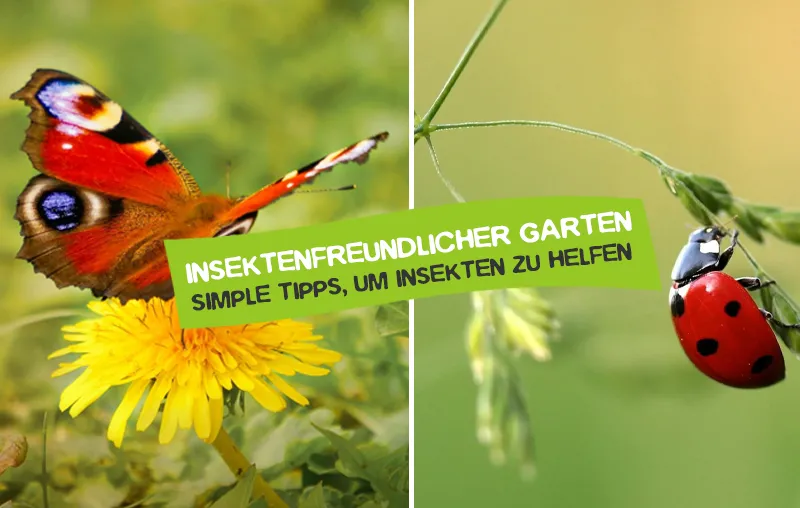You are looking for native hedge plants that are tolerant of pruning and at the same time have a Making a contribution against species extinction? Then you've come to the right place! Hedges not only serve as wind, noise and privacy protection, but are usually also an important habitat for birds, insects and many other animals in your garden.
Provided you steer clear of exotic plants when making your selection. If you are looking for suitable Buy garden plants you should avoid the invasive laurel cherry, bamboo and thuja, none of which have any ecological added value. Fortunately, there are also great alternatives from local nature!
In this article, I will introduce you to suitable native hedge plants that you can use for your bird- and insect-friendly hedge. From robust hornbeam to evergreen holly, from single-variety hedges to mixed hedges, everything is possible. Let's go!
1. hornbeam (Carpinus betulus)
The deciduous hornbeam is one of the most popular hedge plants for good reason! They grows quickly, is tolerant of wind, frost and pruning and their leaves, which turn yellow-bronze in the fall, often remain until spring, making them a excellent privacy protection makes.
The low-maintenance, yellow-flowering hornbeam hedge also provides a habitat for wild bees, beetles and countless caterpillars. Habitat - and also serves as a nesting and landing site for many native bird species.
Important facts:
- Location: Sunny to shady
- Planting distance: 50-80 cm
- Growth: Tall and dense, 30-40 cm per year
- Particularly important for: Birds, bees, caterpillars, beetles and hoverflies
2. thorny hawthorn (Crataegus monogyna)
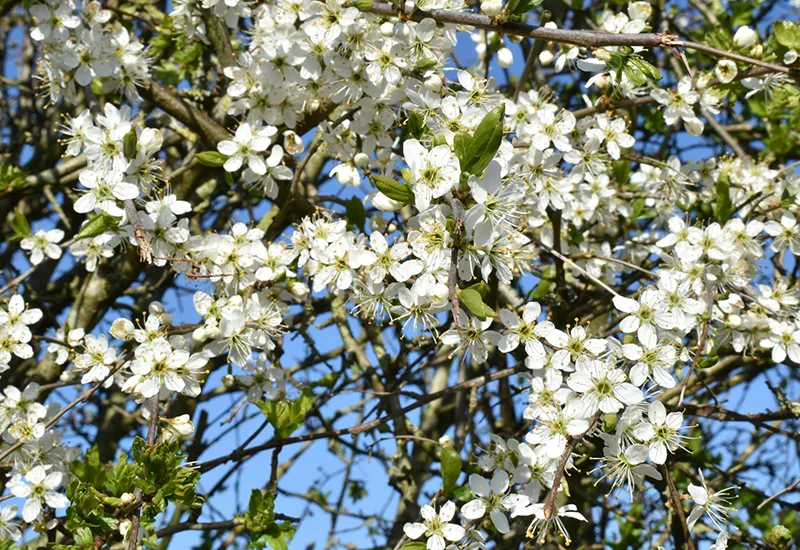
If I wanted to create a single-variety clipped hedge with a native hedge plant, the hawthorn would be my first choice!
It is a pruning-tolerant, thorny large shrub that provides privacy and whose red fruits and beautiful white flowers are also a Ample food supply for countless species of birds and insects.
I know Hardly any native and ecologically more valuable plant than the deciduous hawthorn. It should really be in every sustainable garden stand 🙂
Important facts:
- Location: Sunny to semi-shady
- Planting distance: 40-60 cm
- Growth: Densely branched, 20-25 cm per year
- Particularly important for: Wild bees, caterpillars, butterflies and birds
3. cornelian cherry (Cornus mas)
Another alternative to "evil hedges" such as the cherry laurel is the cornelian cherry, which deciduous, hardy and tolerant of pruning and with its early yellow and nectar-rich flowers is also very bee-friendly.
For native bird species, the opaque clipped hedge serves as a Nesting site. And in the fall, the red fruits of the plant - which are also edible for us humans - provide the jay, the hawfinch and the bullfinch with Chuck.
Important facts:
- Location: Sunny to shady
- Planting distance: about 40 cm
- Growth: Densely branched, 10-30 cm per year
- Particularly important for: Bees, caterpillars, flies, birds and some mammals
4. sea buckthorn (Hippophae rhamnoides)
If you want to create a wildlife-friendly native hedge, you could also use the undemanding, wind-resistant Sea buckthorn. It grows very densely, is easy to shape and offers stability even on slopes.
The bright orange-colored berries of the deciduous shrub are a welcome Food source for birdssuch as blackbirds and juniper thrushes. Its thorns also make it an important bird protection tree.
Important facts:
- Location: Sunny to semi-shady
- Planting distance: about 1 m
- Growth: Irregular, bushy, 25-45 cm per year
- Particularly important for: Birds and some caterpillar species
5. common privet (Ligustrum vulgare)
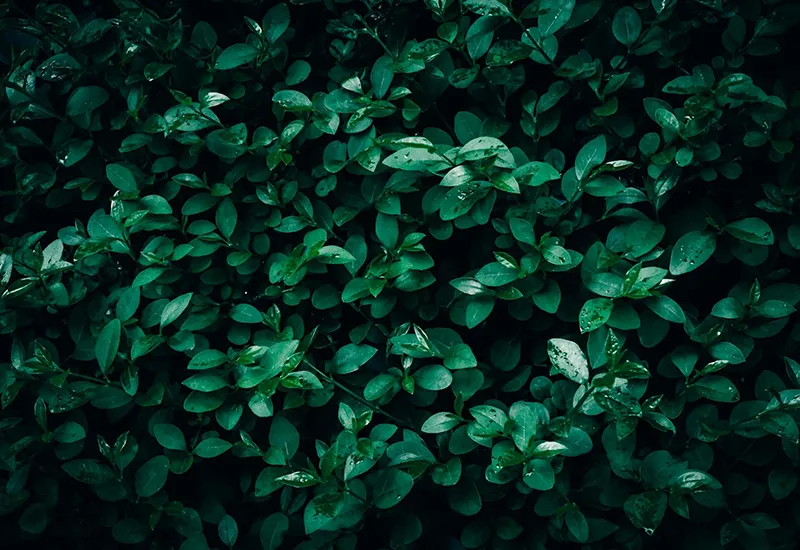
A real classic among native hedge plants is the low-maintenance and pruning-tolerant privet. The wild form loses its leaves in winter, but is still fairly opaque. The black-green privet "Atrovirens" is also available as a wintergreen variety as an alternative.
Both forms have great value for the local economy. Biodiversity. Many insect species love the white flowers of the fast-growing plant. And birds prefer both its berries as a source of food and its dense growth as protection from predators.
Important facts:
- Location: Sunny to semi-shady
- Planting distance: 30-50 cm
- Growth: Closely branched, 20-120 cm per year
- Particularly important for: Butterflies, bees, caterpillars, birds and small mammals
Good to know: An evergreen or wintergreen hedge alternative for you could also be the Common boxwood (Buxus sempervirens). It also provides shelter for birds and is very rare in the wild. However, it is not of great importance for insects.
6. Field Maple (Acer campestre)
More and more often I see field maples being used as a sustainable hedge in front gardens. For good reasons! The Tree is climate resistanttolerates pruning, dense growth and of great ecological value.
If you are still looking for a hedge for birds, butterflies and bees, you should plant the field maple. The green blossoms provide nectar and pollen for wild bees in particular, the leaves are interesting for caterpillars - and the Narrow branches and the split fruits provide both shelter and food for nuthatches, chaffinches and many other native bird species.
Important facts:
- Location: Sunny to semi-shady
- Planting distance: 50-70 cm
- Growth: Compact, 30-40 cm per year
- Particularly important for: Wild bees, caterpillars, butterflies, beetles and birds
7. copper beech (Fagus sylvatica)
You can also use the native copper beech as an environmentally friendly hedge. This deciduous plant is easy to care for and tolerates pruning - and its close branching and dense foliage also make it an ideal hedge. Privacy hedge.
From an ecological perspective, the rather inconspicuous Blossoms and the Beechnuts of great importance for native insect and bird species. Greenfinches and sparrows in particular like to fly to the hedge, which is why the hedge plant fits well into a Bird friendly garden fits. 🙂
Important facts:
- Location: Sunny to shady
- Planting distance: about 50 cm
- Growth: Dense, 20-50 cm per year
- Particularly important for: Caterpillars, wild bees, flies, beetles and birds
8 European yew (Taxus baccata)
The evergreen yew is also very suitable as a native topiary hedge, as it opaque grows and cuts very well.
It also helps to preserve biodiversity. On the one hand, because its pollen-rich yellow flowers attract insects - and on the other, because birds (including blackbirds and song thrushes) live in the hedge. Protection and use the fake berries as Food source serve.
Important facts:
- Location: Sunny to shady
- Planting distance: about 50 cm
- Growth: Compact, 20-30 cm per year
- Particularly important for: Birds and some mammals
9. hazel (Corylus avellana)
A hazelnut tree is also suitable as a native hedge! The deciduous plant is Robust and pruning tolerant and with its flowers, large leaves and brown hazelnuts offers a wide range of food for insects and birds. Last but not least you also attract squirrels, of course.
Important facts:
- Location: Sunny
- Planting distance: about 30-40 cm
- Growth: Densely branched, 40-90 cm per year
- Particularly important for: Bees, beetles, butterflies, birds and small mammals
10th European holly (Ilex aquifolium)

Finally, another evergreen or wintergreen alternative for your home hedge: holly! The pruning-tolerant plants grow together opaquely and serve as a habitat for many garden animals.
The spiny leaves They provide shelter for birds - and their red berries are a welcome winter food, for example for the juniper thrush and the waxwing. Insects also love their small white blossomswhich bloom from May to June.
Important facts:
- Location: Semi-shady to shady
- Planting distance: 60-90 cm
- Growth: Compact, 20-50 cm per year
- Particularly important for: Wild bees and birds
ATTENTION: Please note that you may only cut back your topiary hedge radically between October and February so as not to disturb birds during breeding. According to § Section 39 of the Federal Nature Conservation Act a maximum of one "gentle shaping and maintenance cut" is permitted from March to September.
Native hedges for more biodiversity in the garden!
Personally, I'm more of a fan of near-natural wild hedges with different plants (e.g. barberry, blackthorn, grape rose and red honeysuckle), which are only trimmed now and again but not cut into shape. But that is of course a matter of taste and I can understand anyone who prefers a straight hedge. Both are valuable for wildlife.
With the native plants presented for your clipped hedge, you can create privacy as well as a valuable contribution for nature conservation. Wild bees, ladybugs, birds and even squirrels will pay you a visit in the garden from time to time as a small thank you 🙂
"Any stupid boy can crush a bug. But all the professors in the world can't make one."
Arthur Schopenhauer (more at Species protection quotes)
Do you have any questions or do you know of any other native hedge plants that provide shelter, nesting opportunities or food for animals in the garden? Then I look forward to hearing from you in the comments!
Stay close to nature,

PS: By the way, I have also written a separate blog post for you with insect-friendly small trees that fit into any garden. Have a look if you want to make a bigger impact.

